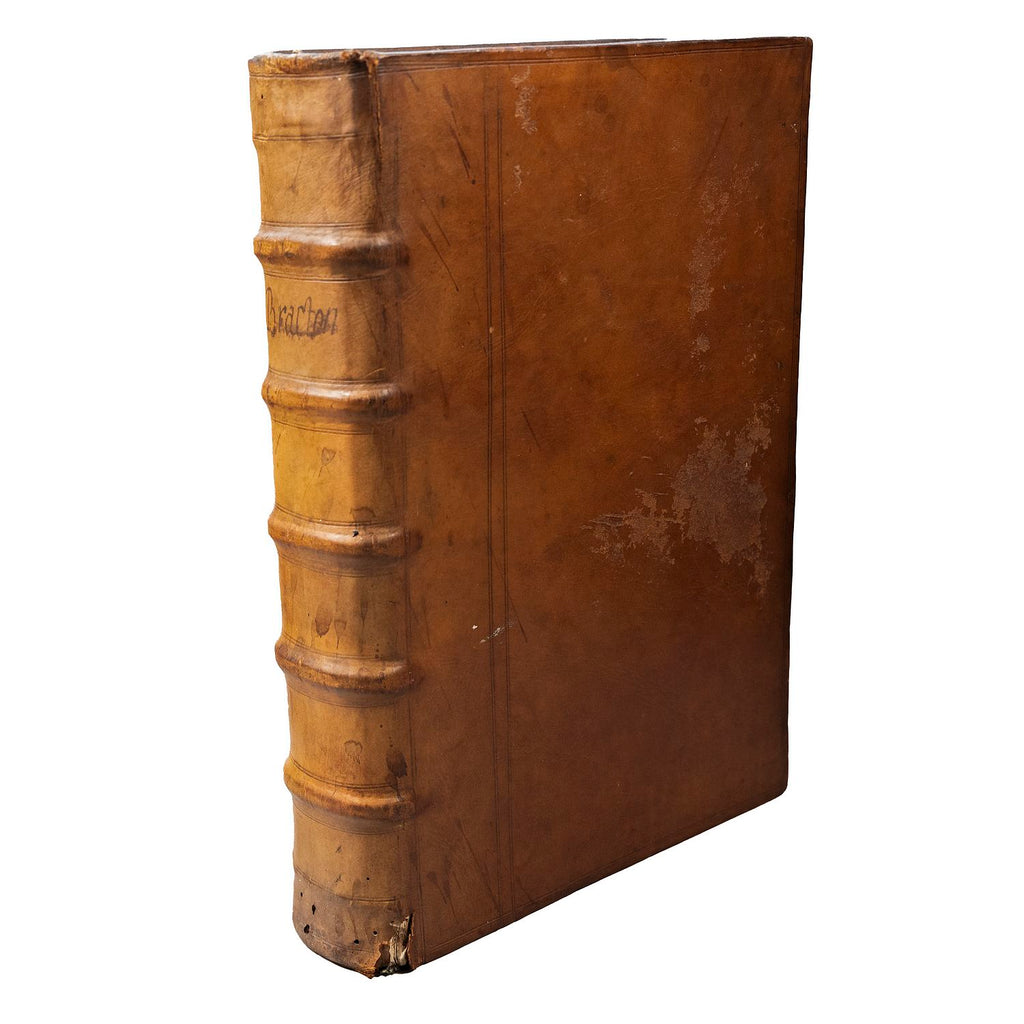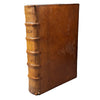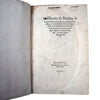De Legibus et consuetudinibus Angliae
BRACTON, Henry de



Libri quinq; in varios tractatus distincti, ad diversorum et vetustissimorum codicum collationem, ingenti cura, nunc primu typis vulgati: quorum quid cuiq; infit, proxima pagina demonstabit.
London: Richard Tottell. (apud Richardum Tottellum).. 1569.
First edition. 4to. 290x195mm. [16], 172, 175-444 leaves. (leaf 439, misnumbered 437). Pagination is as called for by ESTC, collates complete. Imprimatur at foot of title page, "Cum privilegio". Early 17th century full legal calf, blind ruled to covers. Raised bands to spine, author's name in manuscript on second compartment. Foot of the spine has some worm holes and wear with loss. Some rubbing and scuffing to covers. Internally excellent. Slight waterstaining and worm holes to the head of the gutters and worming to the lower right corner of last forty leaves. Tear to corner of leaf 3C4 with no loss of text, and a clean tear to leaf 3G4 covering the last ten lines of text but there is no loss of text. Contemporary ink annotations to initial blank and head of title page. Ownership inscription (scored through but clearly legible) to head of title page: "Daniel Dun, prec (i.e. price) xi.6". An excellent copy with an important provenance of the work which surveyed and defined the English common law for the first time.
Described by F.W Maitland as “the crown and flower of English jurisprudence”, De Legibus et consuetudinibus Angliae (“On the Laws and Customs of England”) by Henry of Bratton (whence Bracton) represents, remarkably, given its great length and the detail and density of the text, only part of the originally conceived work designed to explain and analyse (with all authorities fully cited and, in some instances, entire cases transcribed) the whole of the common law. Despite this, Bracton (the work is often referred to simply by the name of lawyer and priest generally accepted as the final editor and reviser of the manuscript) is about ten times longer than the only previous English legal treatise by de Glanville (see previous item). Bracton, although enormously important in the development of an English precedent-based approach to the resolution of legal disputes, draws also “on Roman law for some of the more abstract organizing principles of the treatise”. This use of continental civil law by Bracton neatly encapsulates the essential difference between English and Roman law, the latter operating in the empyrean of a priori jurisprudential theory, the former grounded solidly in the everyday, making its decisions by reference only to what has gone before. One hesitates to mention it but this difference in legal thinking identified in the thirteenth century resonates in the biggest question facing England and its relationship with the rest of Europe in the twenty first century.
